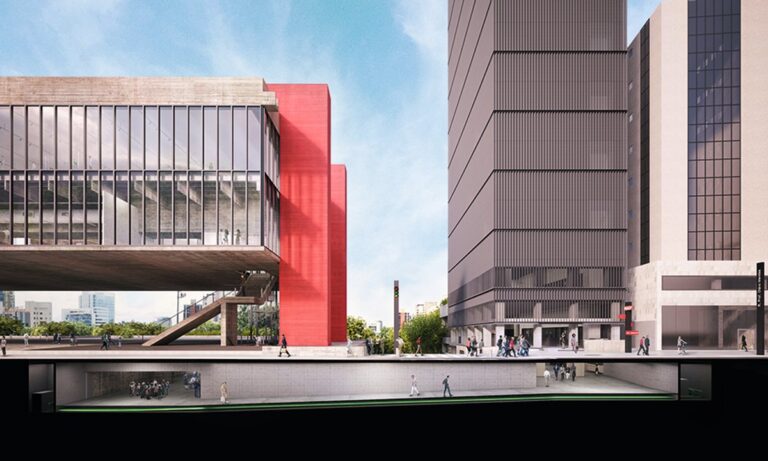Chateaubriand Assis Museum of Art in São Paulo (Masp)
Sao Paulo, Brazil
Opening in late 2024, cost undisclosed
How do you build a museum extension that floats above the ground, with its main bulk resting on elephant legs? And one that is a famous example of modern architecture and a landmark of your city?
The trick is to dig: the Museu de Arte de São Paulo Assis Chateaubriand (Masp) is creating an underground tunnel that will connect to a new 14-story tower across the road. With a minimalist gray facade, the new block avoids visually impacting the original building, while reflecting its shape and size. Inaugurated in 1968 and considered the masterpiece of its architect Lina Bo Bardi, the original building will be named in her honor; while the new one will be named after her husband Pietro Maria Bardi, the founding director of the institution.
The expansion responds to a great need for new space, as only 1% of the collection’s 11,000 objects are on display. Five floors will be new galleries, increasing the space by 66%, for a total of 190,000 square meters. It was conceived by architect Júlio Neves and co-designed by Metro Arquitetos Associados, who previously helped the museum recreate Bo Bardi’s famous glass exhibition. stands
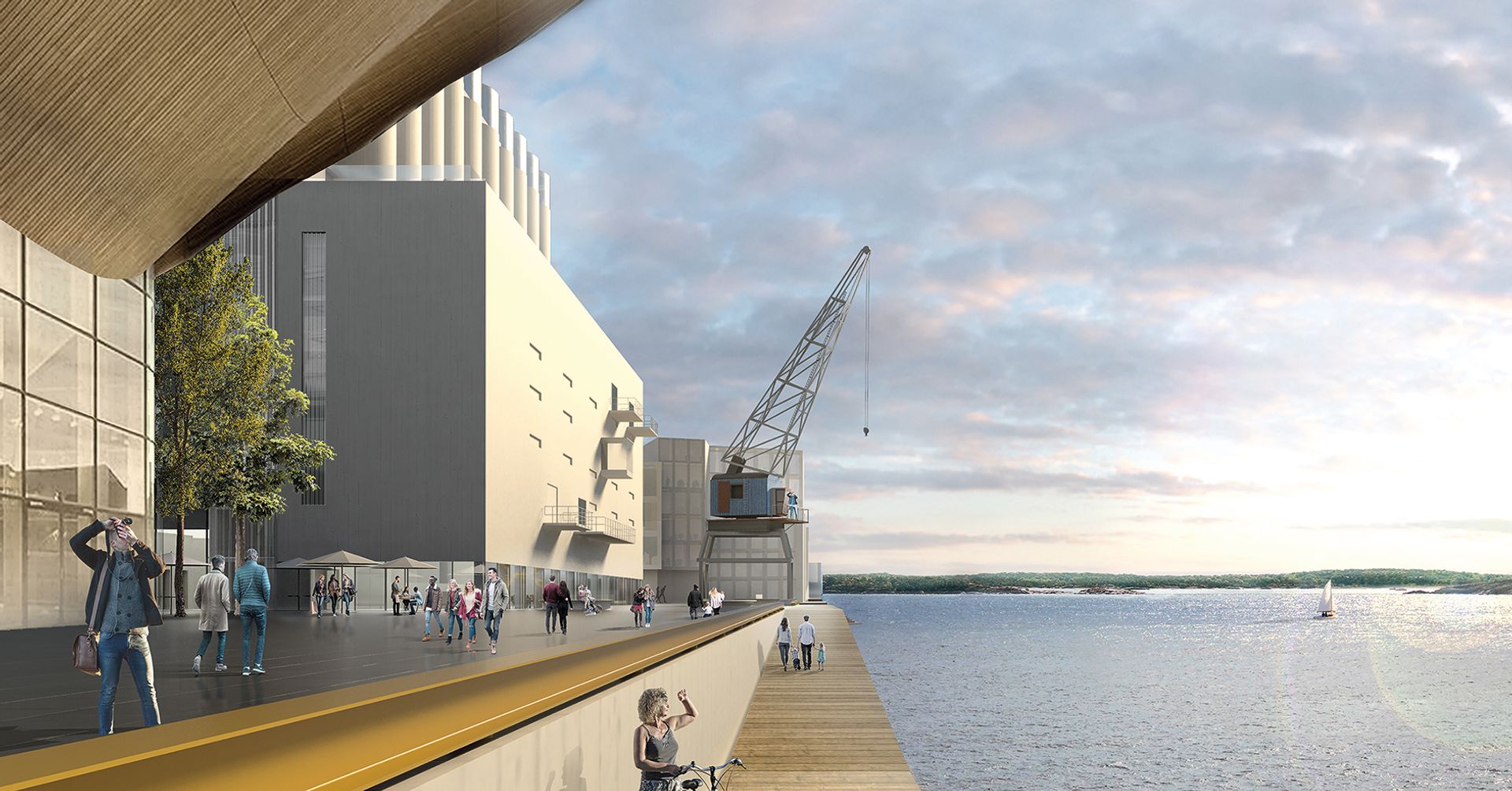
Silo of art
Kristiansand, Norway
Opening on May 11, it cost 710 million NKr ($66 million)
It used to be fashionable to turn disused power stations into art galleries – now flour mills and grain silos are the next post-industrial buildings to find new lives. Following in the footsteps of South Africa’s Zeitz Museum of Contemporary Art Africa is Kunstsilo, a new institution on the quayside of Kristiansand, a small town in the southern tip of Norway. The original grain silo was completed in 1934 and won a national award for modern and functionalist architecture; it will now have three floors and 35,500 square meters of exhibition space. The art on display will be drawn from two collections: the local government’s stock of southern Norwegian art and the 5,000-strong collection of former hedge fund manager and philanthropist Nicolai Tangen, which focuses on Nordic modernist art.

Courtesy of the Grand Egyptian Museum
Great Egyptian Museum
Giza, Egypt
The opening in May cost $1 billion
The Great Egyptian Museum was 99% ready in October 2022. However, it remained closed and shrouded in mystery in 2023. Surely 2024 will be the year the museum’s collection of Ancient Egyptian artifacts is finally on display?
The museum promises to be surprising in the truest sense of the word. More than 100,000 objects are preserved, including objects from Tutankhamun’s tomb. The building will include an observation gallery where visitors can gaze at the pyramids and consider their construction, which by all accounts also took a long time.
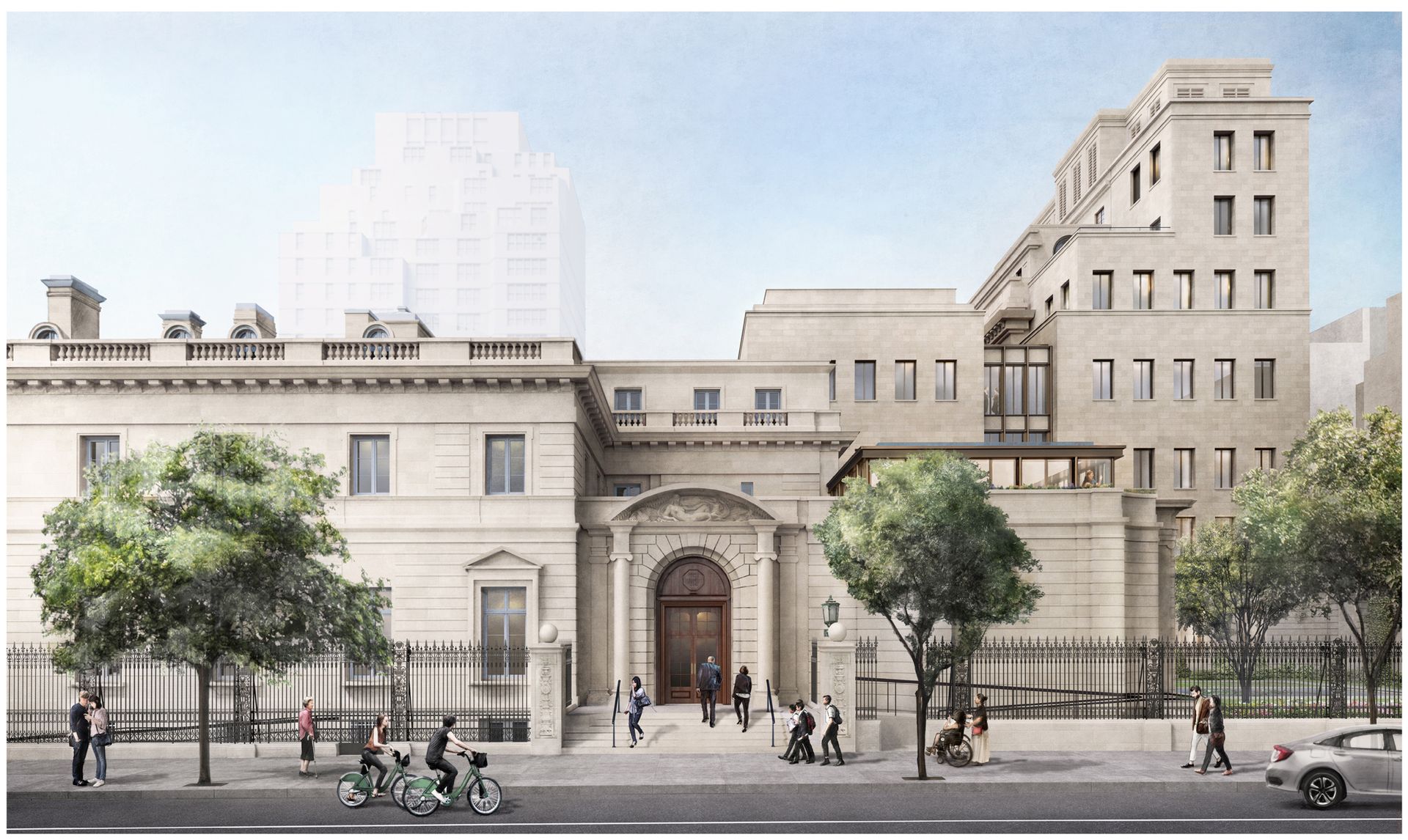
The Frick Collection, one of the jewels in New York’s artistic crown, reopens after an extensive three-year renovation. Courtesy of Selldorf Architects
Frick Collection
New York, USA
Opened in late 2024, it cost $290 million
You have just a few more months to see the Frick Collection in its temporary home at 945 Madison Avenue, the modernist building designed by Marcel Breuer that once housed the Whitney Museum of American Art and the Met Breuer. It will close on March 3 and then the building will become Sotheby’s auction house.
Frick’s stay on Madison Avenue was to allow for a comprehensive renovation and remodeling of his historic home on Fifth Avenue, across from Central Park. The project represents the first comprehensive improvement of its facilities in almost 90 years. The restored museum and library will include new exhibition, education and conservation spaces, as well as greater accessibility and new public facilities.
The museum’s unparalleled trove of fine and decorative arts belonged to Henry Clay Frick, a prominent American steel industrialist and patron of the arts, who bequeathed his Beaux-Arts mansion and historic holdings to the public upon his death in 1919.
Selldorf Architects sought to preserve the Frick’s history with an eye toward operational longevity. On reopening, the stately home will be open to visitors on the second floor, offering an exciting glimpse into the property’s inner sanctum, which has been converted into new gallery spaces displaying small-scale works from the museum’s holdings.
“The second floor was where the family’s private rooms were, the bedrooms and so on, and they’re on a smaller scale than the big rooms downstairs that people are familiar with,” says Frick director Ian Wardropper. “I think people will love being able to go and get a sense of how the whole house worked. We’ve preserved or recovered the ornaments that were there. It gives us 15 rooms upstairs to display the collection.”
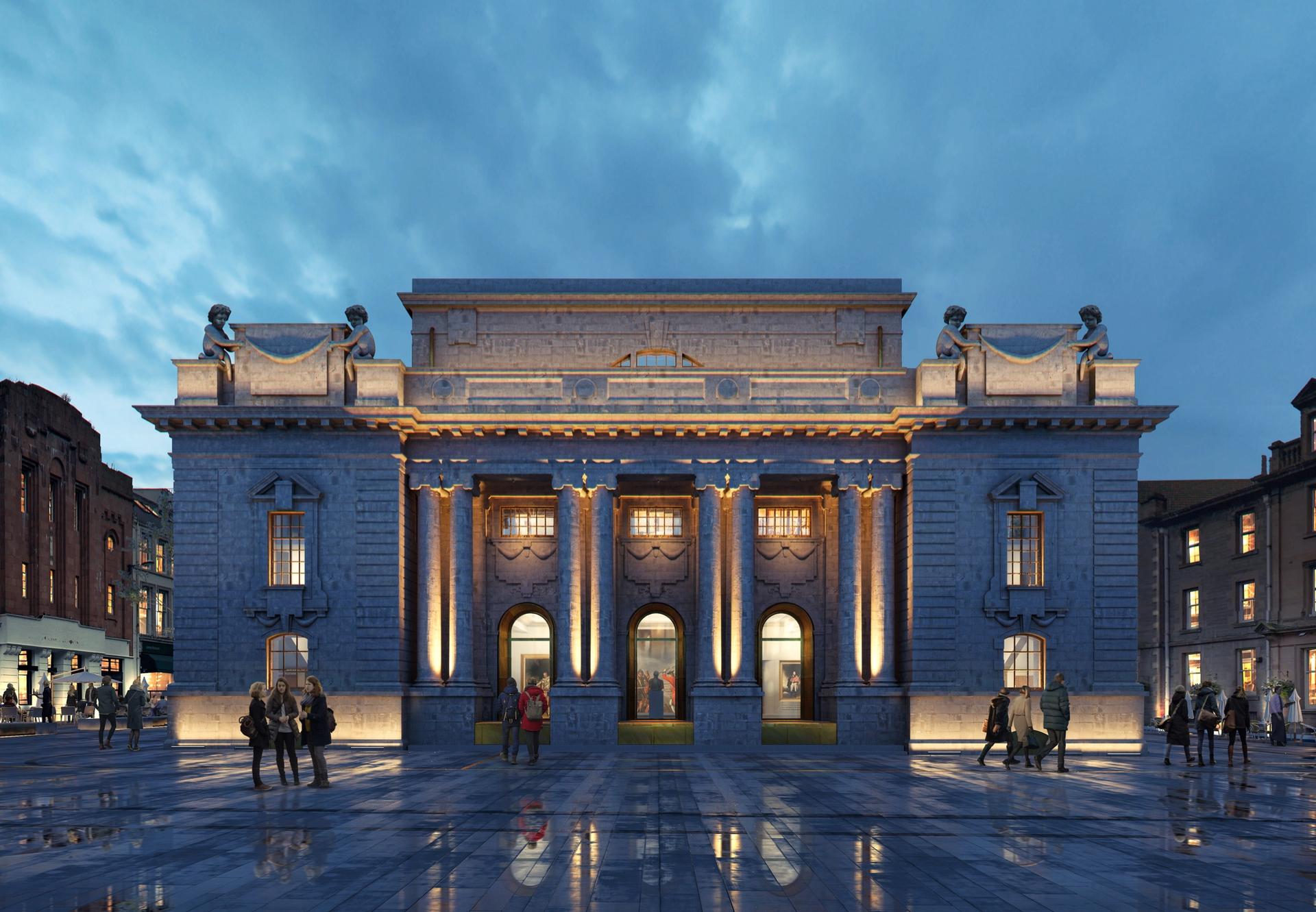
Perth Museum
Perth, United Kingdom
Opening in April, it cost 27 million pounds
Bonnie Prince Charlie spent his life known as “the young pretender”, the Stuart pretender to the thrones of England, Scotland and Ireland. Next March, the suitor’s silver-hilted sword will be on public display for the first time. The sword was made in Perth in 1739 but never returned to Scotland until now, where it will be displayed in the new Perth Museum, which has been converted from the old town hall. Designed by Dutch architects Mecanoo, who were also behind Manchester’s Home arts centre, it will tell the story of Perth as Scotland’s first capital. Another key object that will be exhibited will be the Stone of Destiny, on which British monarchs are crowned.
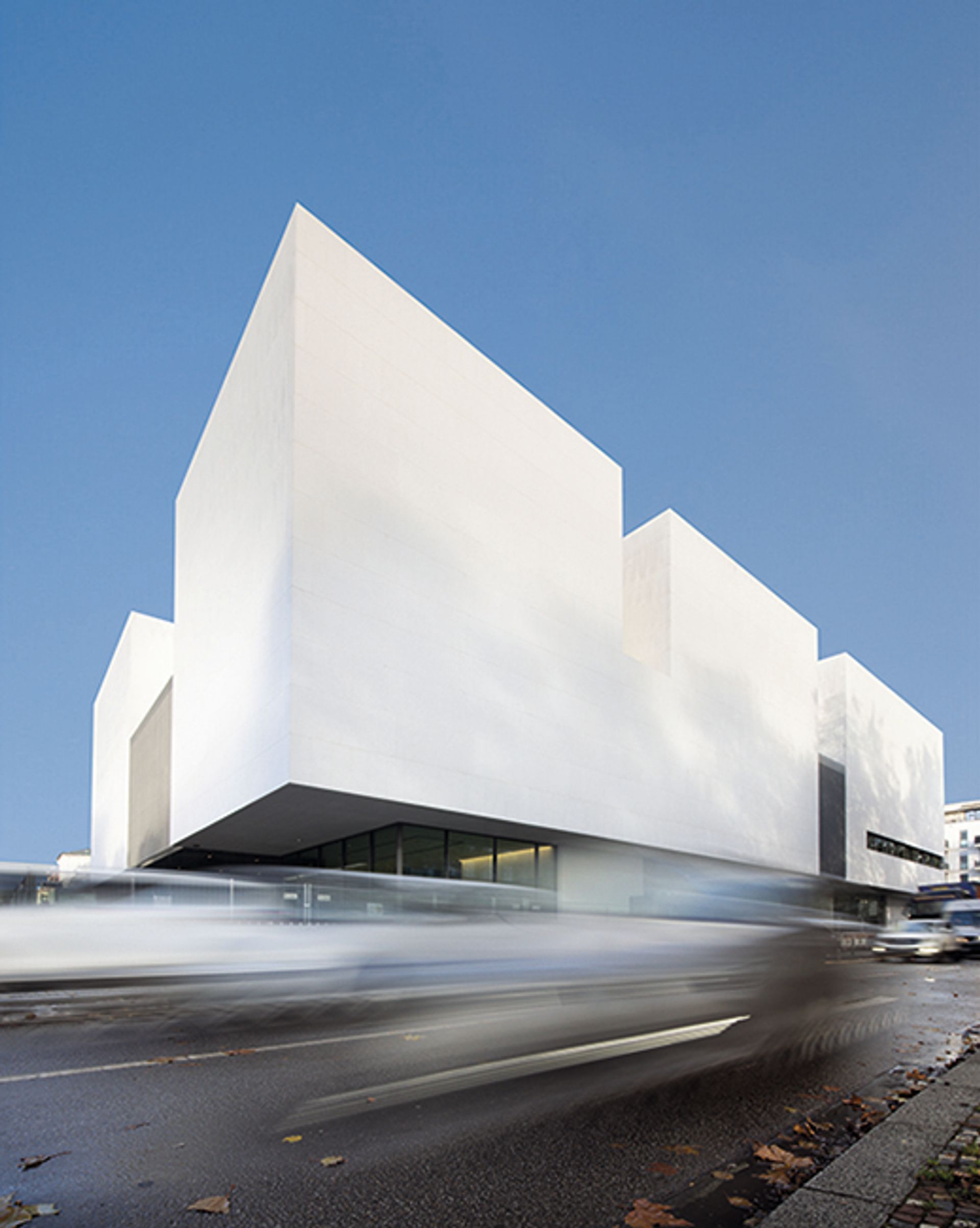
Courtesy Reinhard Ernst Museum
Reinhard Ernst Museum
Wiesbaden, Germany
Opened in 2024, it cost 80 million euros
Reinhard Ernst made his money from the manufacture of precision machine parts: with it he created a collection of more than 860 paintings and sculptures, which will be displayed in 2024 in a purpose-built museum in Wiesbaden, the German city where he lives. , near Frankfurt. The collection focuses on abstraction (postwar German art, Japanese art, primarily Gutai, and American Abstract Expressionism) and includes pieces by Josef Albers, Richard Diebenkorn, and Helen Frankenthaler. The Reinhard & Sonja Ernst Foundation was granted a 99-year lease on its site by the city; the building is as abstract as its content, designed by the firm of Pritzker Prize-winning architect Fumihiko Maki.

